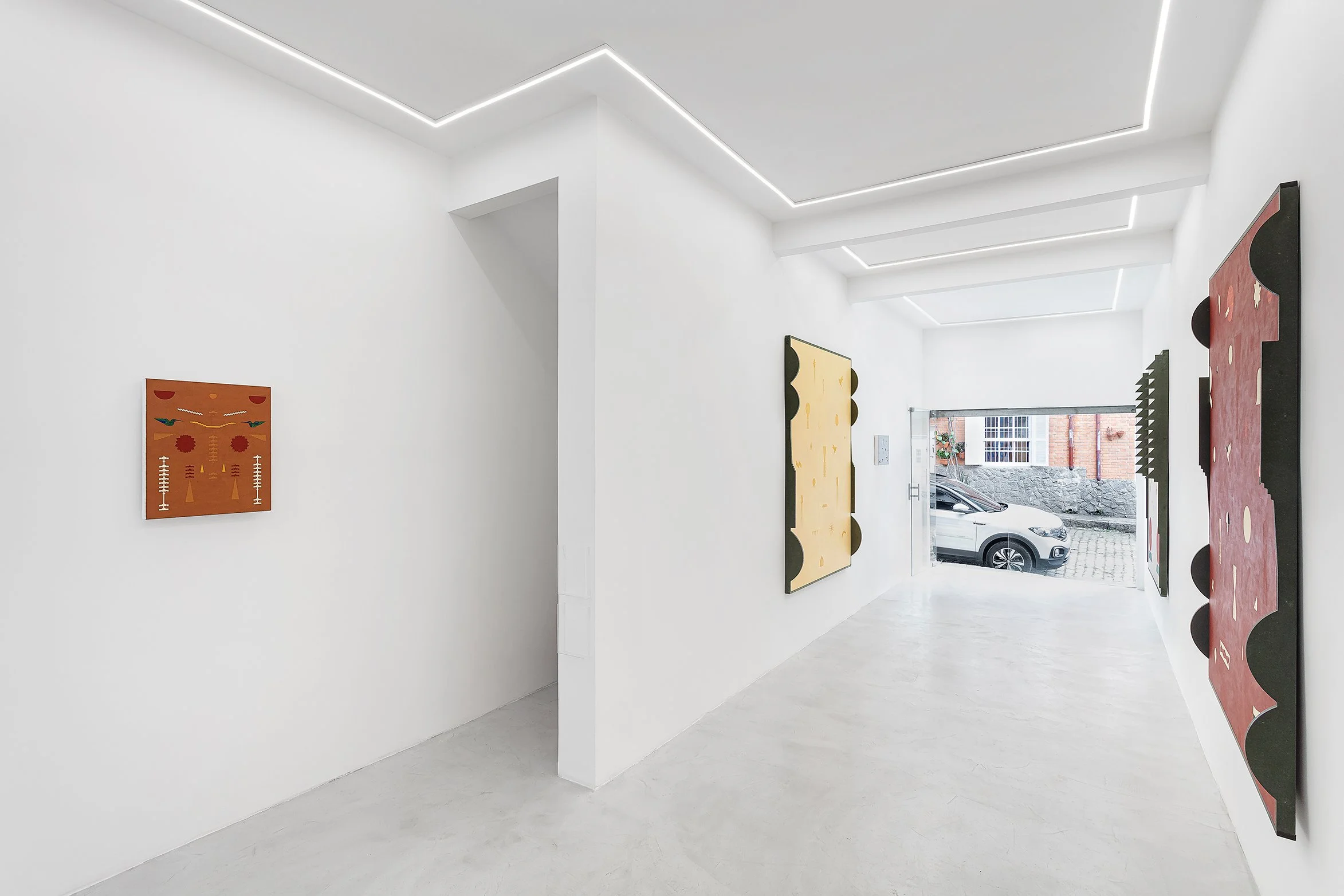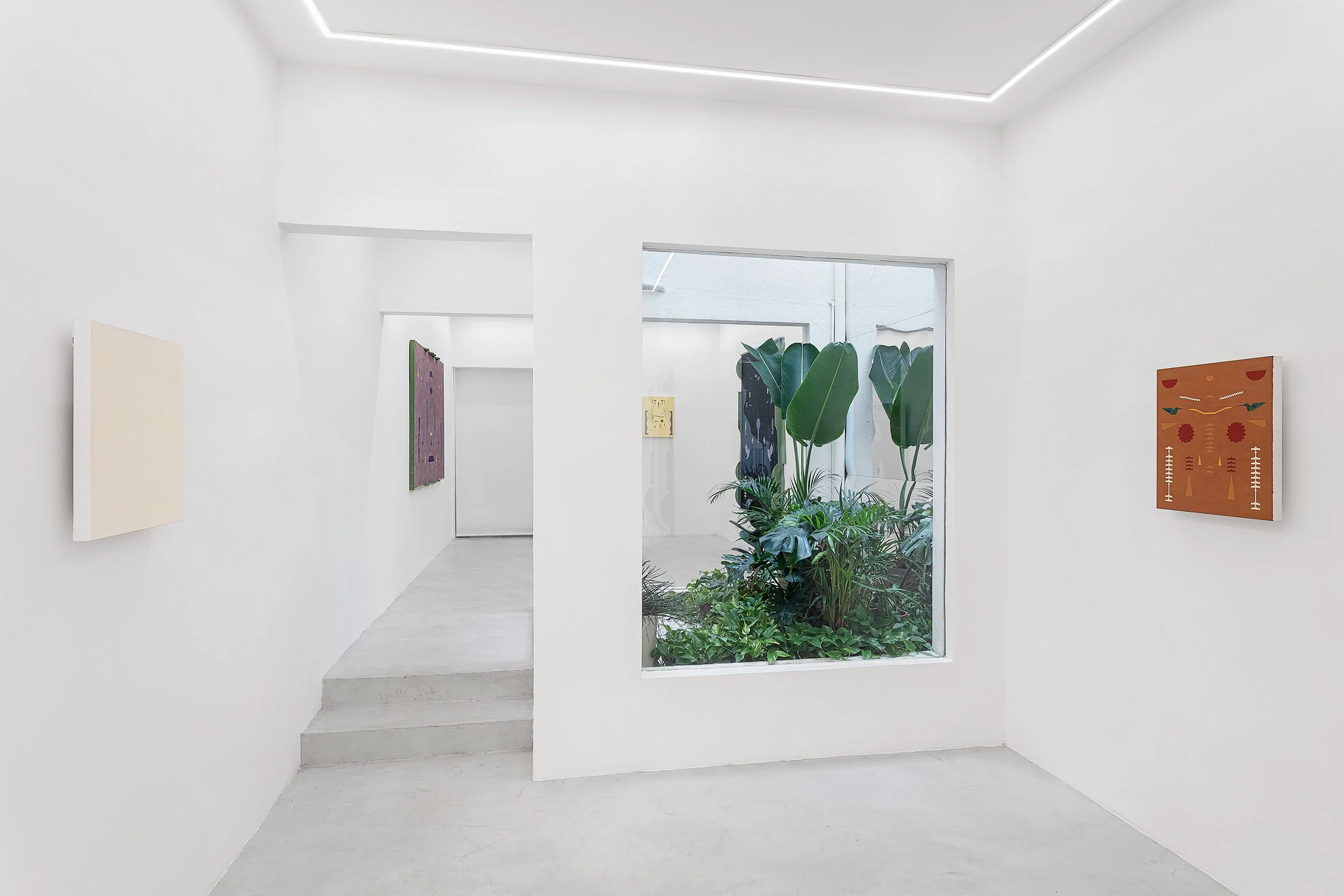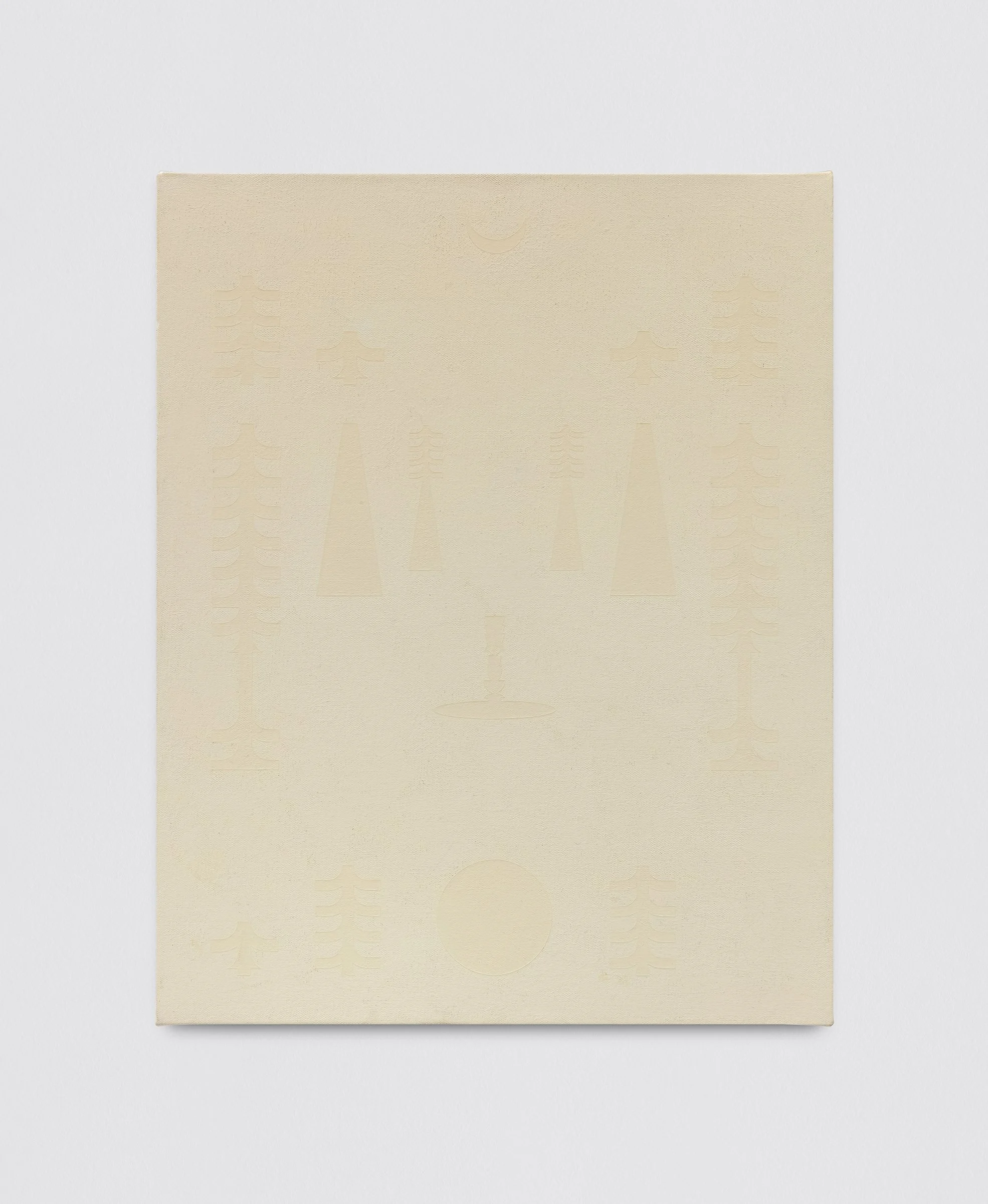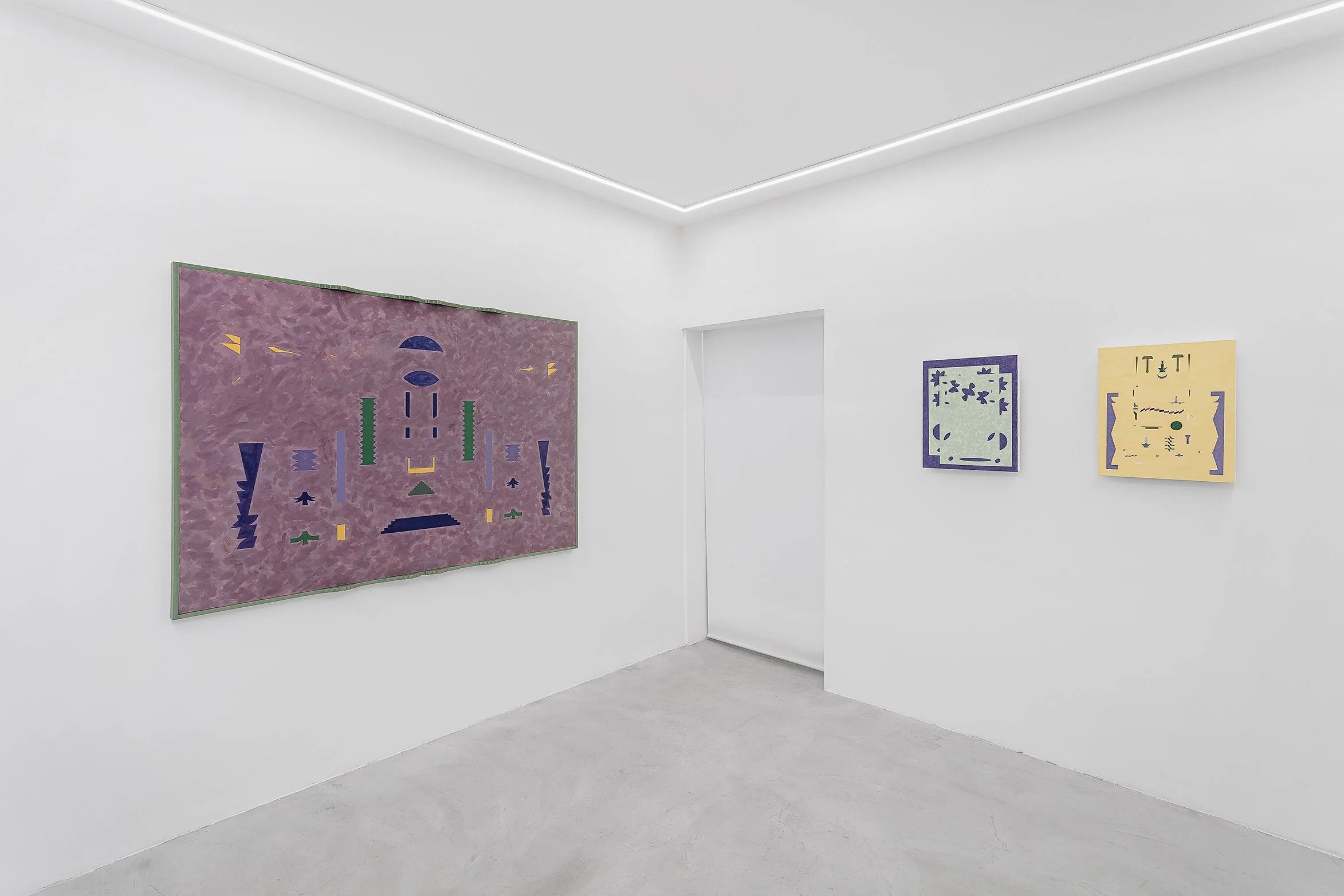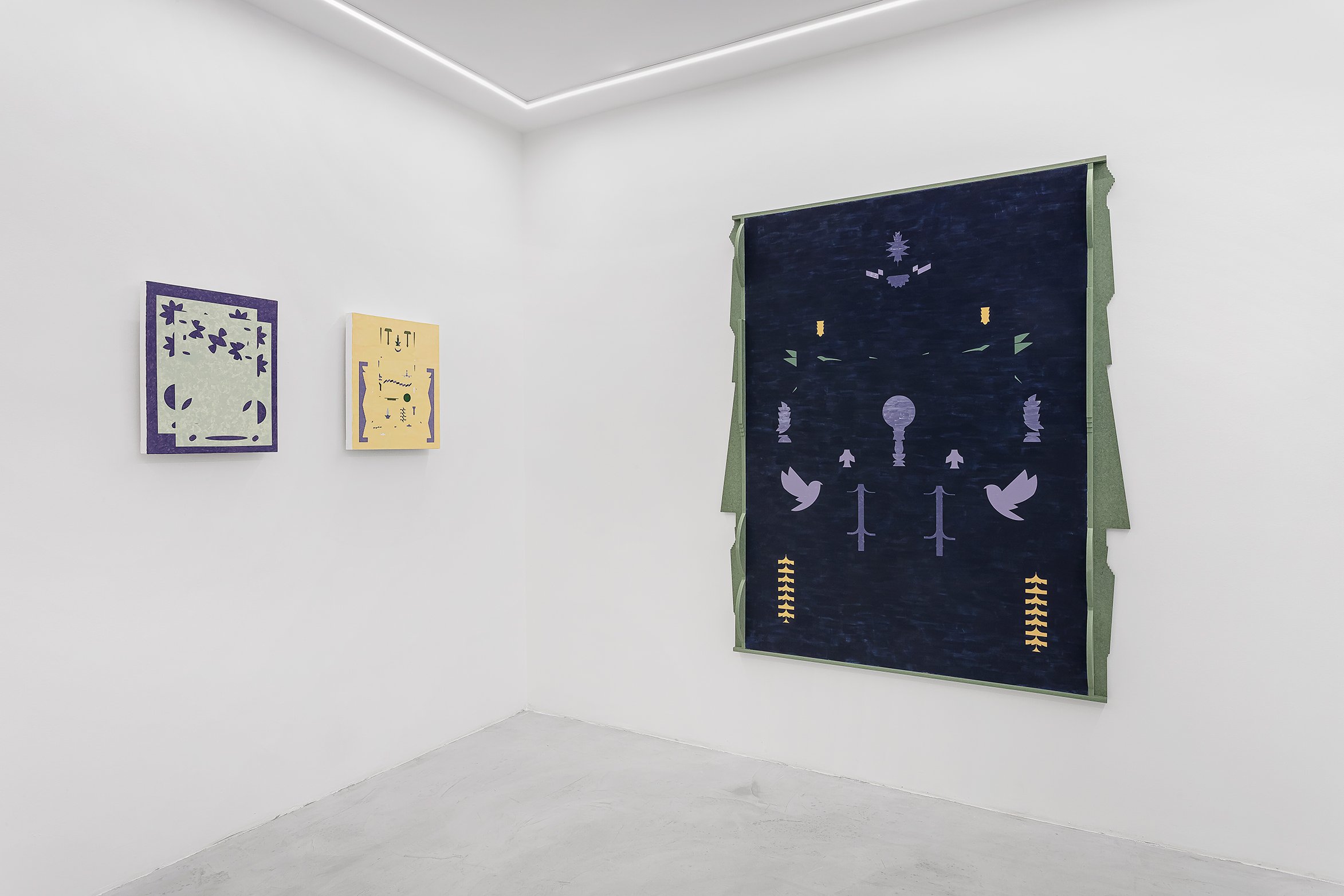
Raúl Díaz Reyes
Arca
Inauguração
14 de Junho, 2025
15h-18h
14 de Junho –
16 de Agosto, 2025
Zielinsky São Paulo
PDF preview
Zielinsky São Paulo tem o prazer de apresentar Arca, exposição individual do artista espanhol Raúl Díaz Reyes. Com texto crítico de Camila Bechelany, a mostra revela a nova produção de pinturas realizada em solo brasileiro neste ano. O evento celebra o primeiro ano de funcionamento da galeria no Brasil, comemorado no último dia 08.
Arca propõe-se como um suporte simbólico e físico — uma espécie de caixa de ressonância — que abriga obras capazes de operar como relicários. Cada peça preserva em si signos crípticos, fragmentos de memória, arquétipos e gestos suspensos no tempo. São cápsulas de significado aberto, matrizes que convidam tanto à decifração quanto à contemplação silenciosa. Em sentido figurado, "arca" pode significar depósito, tesouro ou um lugar de grande variedade.
A primeira vista da obra de Raúl Díaz Reyes destaca-se por uma visualidade minimalista, matizada com notas de onirismo e metafísica. Mas seu foco é a exploração da linguagem em um objeto cultural específico. Ele conecta seu trabalho com a tradição da Arte Conceitual. O imaginário visual de Raúl é o resultado de suas contínuas explorações nos campos da estética e da semiótica contemporâneas: a História da Arte, a abstração, a arquitetura e o design; o paisajismo, a poesia, a geometria, a música e até a arqueologia. Seu ponto de partida é alterar e fundir códigos correspondentes ao som, a imagem e a palavra, e criar um signo híbrido que permita ensaiar uma sorte de outras linguagens. Este enfoque, essencialmente sinestésico, busca uma nova materialidade e/ou arquitetura para a memória humana.
Seus signos são, além de um feito artístico, um efeito linguístico, um incidente gráfico e um instrumento de mística intelectual. Não há em sua constituição nenhum rastro dicotômico: natureza/cultura; texto/ imagem; poesia/pintura; logotipos/ícone, todos esses elementos se fundem gerando assim um corpo que tem a forma imprecisa de um totem primitivo, um livro aberto ou um artefato.
O mundo é feito por nós
por Camila Bechelany
“Toda linguagem é um alfabeto de símbolos cujo exercício pressupõe um passado que os interlocutores compartem; como transmitir aos outros o infinito Aleph, que minha temerosa memória mal e mal abarca?”
Jorge Luis Borges
Em meu encontro com Raúl Díaz Reyes, em seu ateliê em São Paulo, ele me conta que suas pinturas começam em suas memórias. Não em fotografias ou a partir de algo visto pela sua janela, mas de memórias de lugares visitados, de experiências em paisagens frequentadas repetidas vezes em sua cidade natal ou em outras cidades. As pinturas de Arca, são fragmentos organizados dessas memórias, segundo o artista, as obras são como “cápsulas do tempo, matrizes de sentido aberto que convidam à decifração ou simplesmente à contemplação.” E aqui a palavra “arca” como cápsula do tempo me parece corresponder à esfera de vidro do conto O Aleph de Jorge Luis Borges, sendo ele um “dos pontos do espaço que contém todos os outros pontos.”¹
Borges cria no conto O Aleph e em outros textos como A biblioteca de Babel, um modelo do universo ou de um atributo deste, como o infinito, o inumerável, o tempo, eterno ou compreendido simultaneamente ou cíclico. As pinturas de Arca me parecem seguir um procedimento paralelo ao de Borges, nelas há também uma espécie de síntese de mundo. Esses “mundos” das pinturas de Díaz Reyes são representados a partir de formas mais ou menos abstratas, que se repetem ou se duplicam, se fragmentam, suspensas em um fundo vaporoso de cores mais ou menos intensas. Trata-se de um vocabulário iconográfico criado a partir de diferentes referências.
Ao primeiro contato, poderíamos alinhar o pensamento estético de Díaz Reyes ao de alguns artistas que se interessaram por pensar sua produção dentro de uma estrutura articulada, de elementos que se combinam e recombinam, formando alfabetos visuais, artistas que criaram um vocabulário próprio de formas simbólicas, a exemplo do universalismo construtivo de Torres García (1874-1949) e da “riscadura” brasileira de Rubem Valentim (1922 -1991). Mas ainda que Díaz Reyes tenha seu vocabulário próprio de formas, seu ímpeto criativo está distante da motivação “moderna” de pensar um programa em busca de uma identidade para a arte ou ainda da criação de uma poética de conteúdo intercultural e popular como o brilhante alfabeto kitônico de Valentim. Na produção de Díaz Reyes, a pintura é território para transações de formas a partir de sua observação atenta à memória e à experiência do espaço. Consciente ou inconscientemente, passadas ou presentes, suas memórias – como uma narrativa da passagem do tempo - é que vão dando forma a esse vocabulário simbólico particular, em um constante exercício de combinar e recombinar.
Como um artista de seu tempo, que viveu a virada do século XX para o XXI, Díaz Reyes se conecta a diversas fontes criadoras e lida com a história da arte como uma espécie de arquivo aberto, constantemente acessível. Ele cita influências que vão de figurinos criados para o teatro na década de 1950 na Alemanha; a sua passagem pelo Peru e o contato com a arte têxtil até sua vida mais recente no Brasil. Suas pinturas vão sendo fabricadas a partir de uma lógica de organização e aleatoriedade, sendo sua iconologia bastante diversa. as formas que vemos se destacar de fundos, mais ou menos transparentes, são como sínteses de lugares, arquiteturas, naturezas, experiências que ele compõe numa “geometria sensível”. Os elementos que “sobram” em algumas pinturas, aparecem em outras. Já as molduras desenhadas para cada uma das pinturas repetem algumas das formas que aparecem no quadro enquanto estruturam e delimitam seu espaço.
Segundo o filósofo Nelson Goodman, “o mundo é feito por nós”, ou, mais precisamente, o nosso conhecimento consiste na construção de “versões-de-mundos”. Para ele, as construções de mundo expressas por um artista ou um cientista não são diferentes interpretações ou explicações de um mesmo e único mundo pré-existente, mas sim uma e a mesma coisa. Podemos, por isso, dizer, segundo ele, que “fazemos mundos” ou que “fazemos versões” porque, estas noções são quase sempre sinônimas. As versões são sistemas de símbolos que ordenam, classificam e categorizam os objetos do seu domínio, isto é, os seus referentes. Díaz Reyes nos dar a sua versão do mundo em diferentes perspectivas, de forma silenciosa.
Na contramão da super produção de imagens da cultura contemporânea em que o tempo vai acelerado, o artista busca novos modos perceptivos para compreender a dupla perspectiva de passado e futuro. Cabe a nós pensarmos com o artista um outro tempo, um tempo da pausa.
____
¹ BORGES, 2008, p. 145
Zielinsky São Paulo is pleased to present Arca, a solo exhibition by Spanish artist Raúl Díaz Reyes. Featuring a critical text by Camila Bechelany, the show unveils new paintings created on Brazilian soil this year. The event celebrates the gallery’s first year of operation in Brazil, commemorated on the 8th of this month.
Arca positions itself as both a symbolic and physical vessel—a resonance chamber—housing works that function as reliquaries. Each piece preserves cryptic signs, fragments of memory, archetypes, and gestures suspended in time. They are capsules of open meaning, matrices inviting both decipherment and silent contemplation. Figuratively, "arca" (ark) evokes a repository, a treasure, or a place of immense variety.
A first glance at Raúl Díaz Reyes’ work reveals a minimalist visuality, nuanced with dreamlike and metaphysical notes. Yet his focus lies in exploring language through a specific cultural object, connecting his practice to the Conceptual Art tradition. Raúl’s visual imaginary stems from his continuous explorations across contemporary aesthetics and semiotics: Art History, abstraction, architecture, design, landscaping, poetry, geometry, music, and even archaeology. His starting point is to alter and fuse codes corresponding to sound, image, and word, creating a hybrid sign that rehearses new forms of language. This inherently synesthetic approach seeks a new materiality and/ or architecture for human memory.
His signs are not only artistic feats but also linguistic effects, graphic incidents, and instruments of intellectual mysticism. Their constitution bears no dichotomic traces: nature/culture, text/image, poetry/painting, logos/icons—all these elements fuse, generating a body with the imprecise form of a primitive totem, an open book, or an artifact.
The world is made by us
by Camila Bechelany
Every language is an alphabet of symbols whose use presupposes a past that the interlocutors share; how can one transmit to others the infinite Aleph, which my fearful memory can scarcely contain
Jorge Luis Borges
I meet with Raúl Díaz Reyes, in his atelier in São Paulo, he tells me that his paintings begin in his memories. Not in photographs or in something seen from his window, but in memories of places he has visited, of experiences in landscapes he has frequented repeatedly in his hometown or in other cities. Arca’s paintings are organized fragments of these memories. According to the artist, the works are like “time capsules, matrices of open meaning that invite deciphering or simply contemplation.” And here, the word “arca” as a time capsule seems to correspond to the glass sphere in Jorge Luis Borges’ short story The Aleph, being one “of the points in space that contains all other points.”¹
Borges creates the tell The Aleph and in other texts like Babel´s library, a model from the universe or an attribute, like infinity, the innumerable, time, eternity or simultaneously cyclically understood. Arca´s painting In The Aleph and other texts such as The Library of Babel, Borges creates a model of the universe or of one of its attributes—such as the infinite, the innumerable, or time, whether eternal, simultaneously grasped, or cyclical. Arca’s paintings seem to follow a parallel procedure to Borges’s; within them, there is also a kind of synthesis of the world. These “worlds” in Díaz Reyes’s paintings are represented through more or less abstract forms that repeat or duplicate, that fragment, suspended in a vaporous background of more or less intense colors. It is an iconographic vocabulary constructed from various references.
At first glance, one might align Díaz Reyes’s aesthetic thinking with that of certain artists who approached their work within an articulated structure—elements that combine and recombine to form visual alphabets. Artists who created their own vocabulary of symbolic forms, such as the constructive universalism of Torres García (1874–1949) and the Brasilian riscadura of Rubem Valentim (1922–1991). Yet, although Díaz Reyes possesses his own vocabulary of forms, his creative drive is far removed from the “modern” motivation of formulating a program in search of an identity for art, or even from the creation of an intercultural and popular poetic language such as Valentim’s brilliant chthonic alphabet. In Díaz Reyes’s work, painting becomes a territory for the transaction of forms, grounded in his attentive observation of memory and spatial experience. Consciously or unconsciously, from the past or the present, it is his memories—like a narrative of the passage of time—that shape this particular symbolic vocabulary, in a constant exercise of combining and recombining.
As an artist of his time, who lived through the turn of the 20th to the 21st century, Díaz Reyes connects to various creative sources and engages with art history as a kind of open archive, constantly accessible. He mentions influences ranging from costumes designed for theater in 1950s Germany, to his time in Peru and contact with textile art, to his more recent life in Brasil. His paintings are constructed through a logic that blends organization and randomness, with a highly diverse iconology.
His paintings resemble deep spaces where geometric forms, birds, and totems float... the shapes that stand out against more or less transparent backgrounds are like syntheses of places, architectures, natures, and experiences that he composes into a “sensitive geometry.” Elements that are “left over” in some paintings appear in others. The frames designed for each painting repeat some of the forms found within the painting itself, while also structuring and delimiting its space.
According to the philosopher Nelson Goodman, “the world is made by us”, or, precisely, our knowledge consists in the construction of “world-versions”. For him, the constructions of the world expressed by an artist or a scientist are not different interpretations or explanations of one single, pre-existing world, but rather one and the same thing. We can therefore say, according to him, that “we make worlds” or that “we make versions,” since these notions are almost always synonymous.Versions are systems of symbols that organize, classify, and categorize the objects within their domain—that is, their referents. Díaz Reyes offers us his version of the world from different perspectives, in a quiet, unassuming manner.
Off the beaten path in mass production of images in contemporary culture, where time accelerates, the artist seeks new perceptual modes to understand the dual perspective of past and future. It is up to us to think with the artist about another kind of time, a time of pause.
____
¹ BORGES, 2008, p. 145


